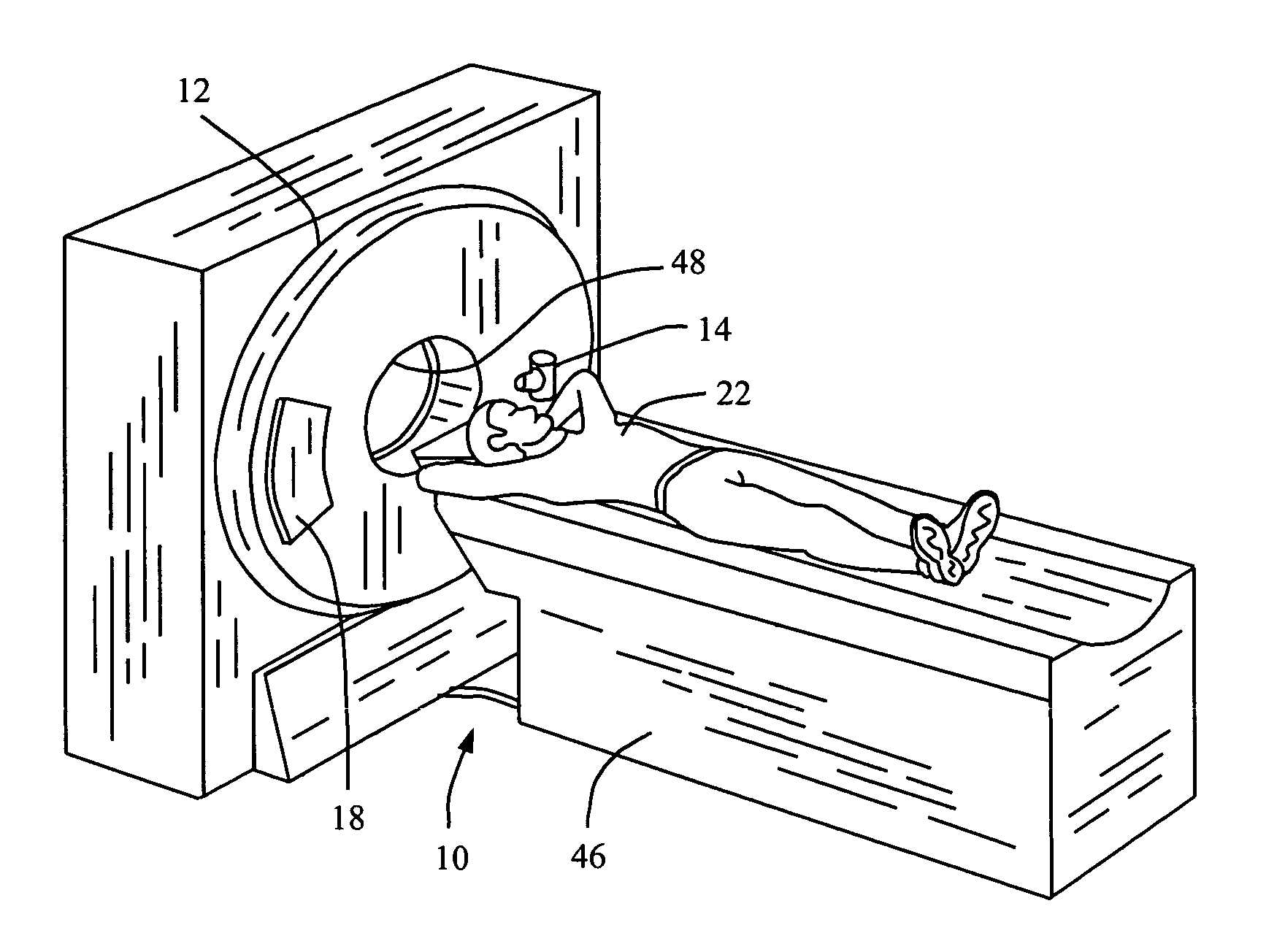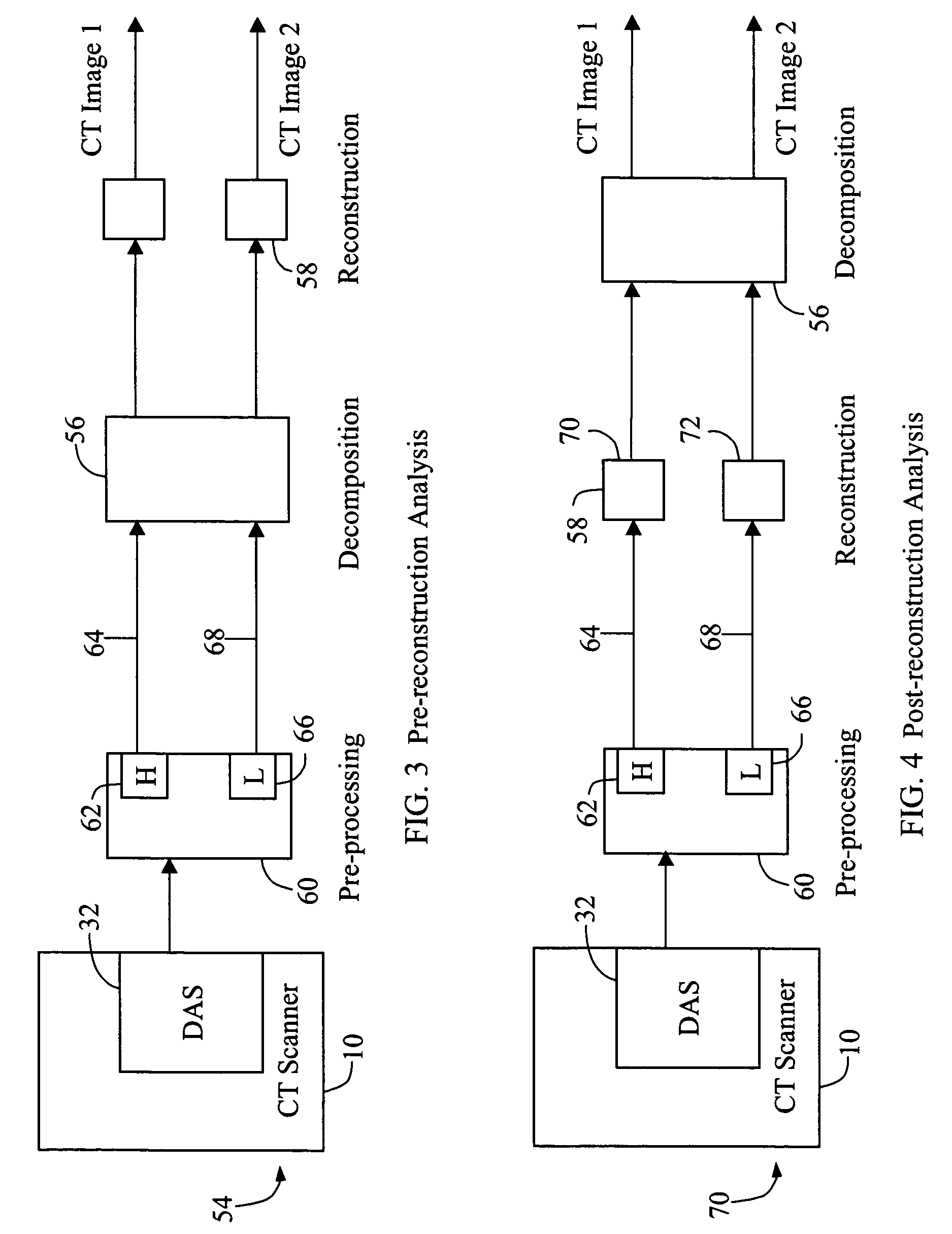Methods and apparatus for detecting structural, perfusion, and functional abnormalities
a technology of functional abnormalities and methods, applied in the field of computed tomographic (ct) imaging, can solve the problems of not providing quantitative image values in conventional ct, other beam hardening artifacts may be difficult to correct, and other beam hardening artifacts such as metals and contrast agents, which are difficult to corr
- Summary
- Abstract
- Description
- Claims
- Application Information
AI Technical Summary
Benefits of technology
Problems solved by technology
Method used
Image
Examples
Embodiment Construction
[0020]The methods and apparatus described herein address the detection and diagnosis of abnormalities in the lung regions of a patient by employing novel approaches that make use of basic properties of the x-ray and material interaction. For each ray trajectory, multiple measurements regarding different mean x-ray energies are acquired. As explained in greater detail below, when Basis Material Decomposition (BMD) and Compton and photoelectric decomposition are performed on these measurements, additional information is obtained that enables improved accuracy and characterization.
[0021]In some known CT imaging system configurations, an x-ray source projects a fan-shaped beam which is collimated to lie within an X-Y plane of a Cartesian coordinate system and generally referred to as an “imaging plane”. The x-ray beam passes through an object being imaged, such as a patient. The beam, after being attenuated by the object, impinges upon an array of radiation detectors. The intensity of t...
PUM
| Property | Measurement | Unit |
|---|---|---|
| CT | aaaaa | aaaaa |
| computed tomography | aaaaa | aaaaa |
| energy resolution | aaaaa | aaaaa |
Abstract
Description
Claims
Application Information
 Login to View More
Login to View More - R&D
- Intellectual Property
- Life Sciences
- Materials
- Tech Scout
- Unparalleled Data Quality
- Higher Quality Content
- 60% Fewer Hallucinations
Browse by: Latest US Patents, China's latest patents, Technical Efficacy Thesaurus, Application Domain, Technology Topic, Popular Technical Reports.
© 2025 PatSnap. All rights reserved.Legal|Privacy policy|Modern Slavery Act Transparency Statement|Sitemap|About US| Contact US: help@patsnap.com



